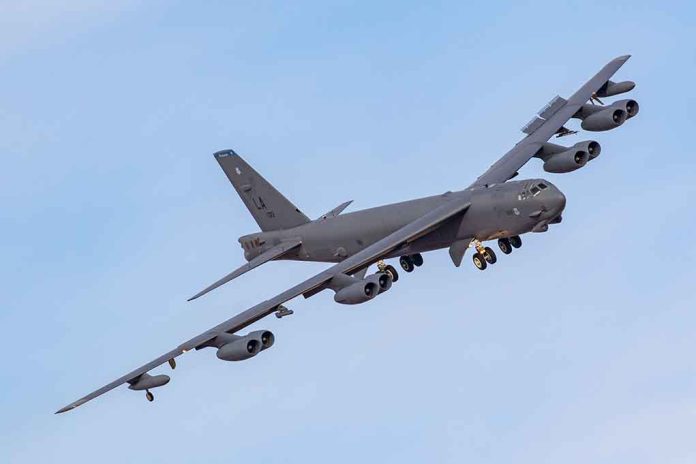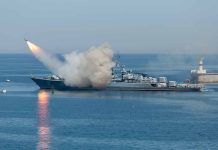
U.S. airstrikes in Syria eliminate 37 terrorist operatives, including top commanders from ISIS and Al Qaeda affiliate groups.
At a Glance
- U.S. Central Command conducted two targeted strikes in Syria, killing 37 terrorist operatives
- Senior leaders from ISIS and Hurras al-Din, an Al Qaeda affiliate, were among those eliminated
- The strikes are part of ongoing efforts to disrupt terrorist activities against civilians and military personnel
- No civilian casualties were reported in either strike
Precision Strikes Eliminate Terrorist Leadership
U.S. Central Command (CENTCOM) has dealt a significant blow to terrorist organizations operating in Syria. In a series of targeted airstrikes, American forces successfully eliminated 37 terrorist operatives, including several high-ranking commanders from ISIS and Hurras al-Din, an Al Qaeda-affiliated group. These precision strikes underscore the United States’ unwavering commitment to combating terrorism and maintaining stability in the region.
The first strike, conducted on September 24, targeted a group of terrorists in northwest Syria. This operation resulted in the deaths of nine operatives, including Marwan Bassam ‘Abd-al-Ra’uf, a senior leader of Hurras al-Din. This Al Qaeda-linked organization is known for its global attack aspirations, making the elimination of its leadership a crucial step in preventing future terrorist activities.
Large-Scale Airstrike on ISIS Training Camp
A second, more extensive operation took place on September 16. CENTCOM forces carried out a large-scale airstrike on a remote ISIS training camp in central Syria. This decisive action resulted in the elimination of at least 28 ISIS operatives, including four senior leaders. The strike aimed to disrupt ISIS’s operational capabilities and hinder their ability to plan and execute attacks against U.S. interests and allies in the region.
“These strikes against leadership and operatives of ISIS and the Al Qaeda affiliate, Hurras al-Din, represent CENTCOM’s commitment to the enduring defeat of terrorist organizations in the CENTCOM area of responsibility and our support to regional stability,” said Gen. Michael Erik Kurilla, commander, U.S. Central Command.
These targeted operations are part of CENTCOM’s broader strategy to work alongside regional partners in disrupting and degrading terrorist networks. By focusing on eliminating key leadership and training facilities, U.S. forces aim to prevent these groups from planning, organizing, and conducting attacks against civilians and military personnel from the United States and its allies.
US airstrikes on Syria kill 37 militants | Click on the image to read the full story https://t.co/Ff0Knb8DEm
— kcranews (@kcranews) September 29, 2024
U.S. Presence and Strategy in Syria
Currently, approximately 900 U.S. forces are stationed in Syria, supported by an undisclosed number of contractors. Their primary mission is to prevent a resurgence of ISIS and to advise and assist the Kurdish-led Syrian Democratic Forces in northeastern Syria. This area holds strategic significance due to the presence of Iran-backed militant groups and a key border crossing with Iraq.
“CENTCOM Forces conducted two targeted strikes in Syria, killing 37 terrorist operatives, including multiple senior leaders of the terrorist organizations of ISIS and Hurras al-Din, an Al Qaeda affiliate.” reported US Central Command (CENTCOM)
The recent airstrikes demonstrate the United States’ continued dedication to maintaining pressure on terrorist organizations operating in the region. By targeting leadership and training facilities, CENTCOM aims to disrupt the planning and execution of attacks that could threaten U.S. interests, allies, and partners throughout the Middle East and beyond.
Implications for Regional Stability
These successful operations against ISIS and Al Qaeda-affiliated groups in Syria represent a significant victory in the ongoing fight against terrorism. By eliminating key leaders and disrupting training camps, U.S. forces have dealt a considerable blow to these organizations’ ability to plan and carry out attacks. However, the situation in Syria remains complex, with various factions and interests at play.
As the United States continues its efforts to maintain stability and prevent the resurgence of terrorist groups in the region, it must also navigate the delicate balance of international relations and the potential for wider conflicts. The precision and effectiveness of these recent strikes demonstrate America’s resolve in protecting its interests and allies while minimizing civilian casualties and collateral damage.














